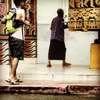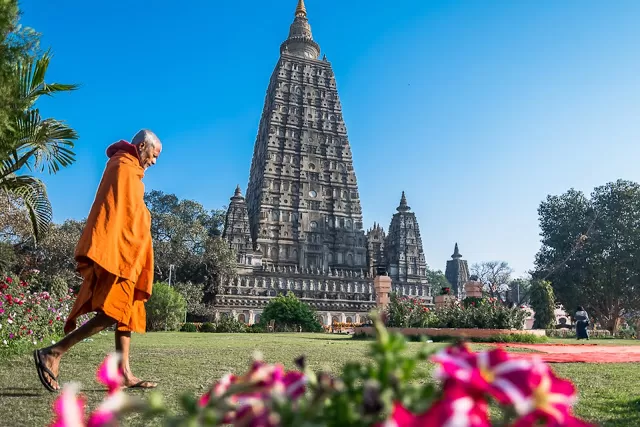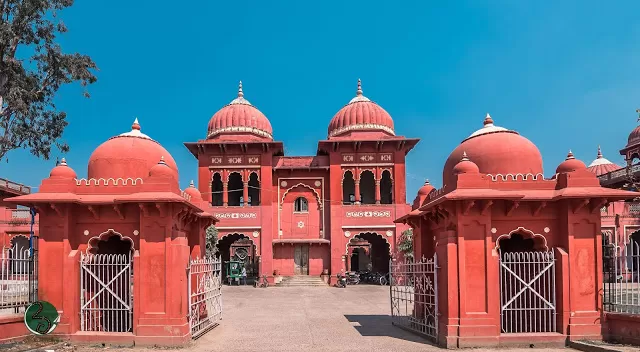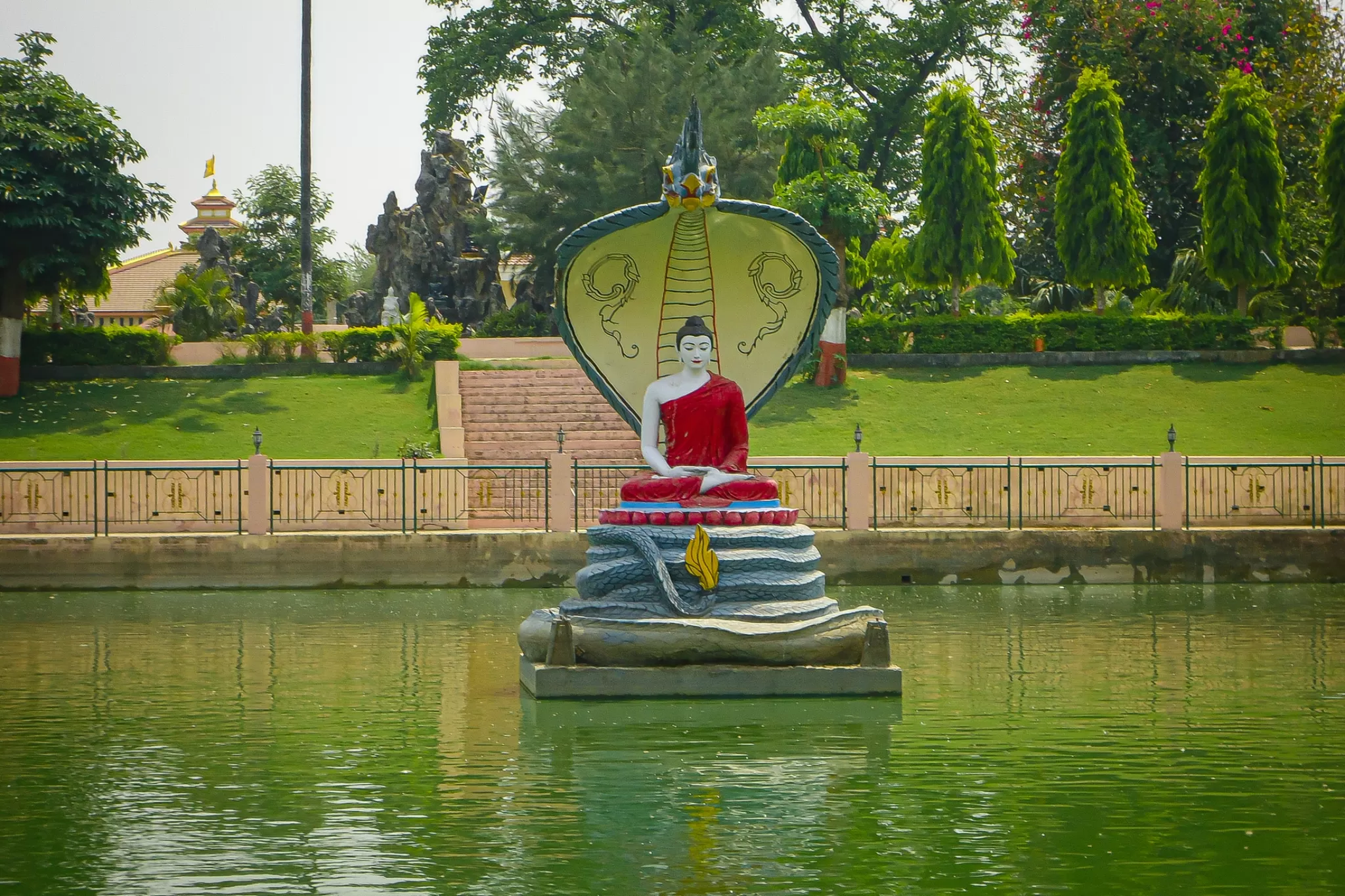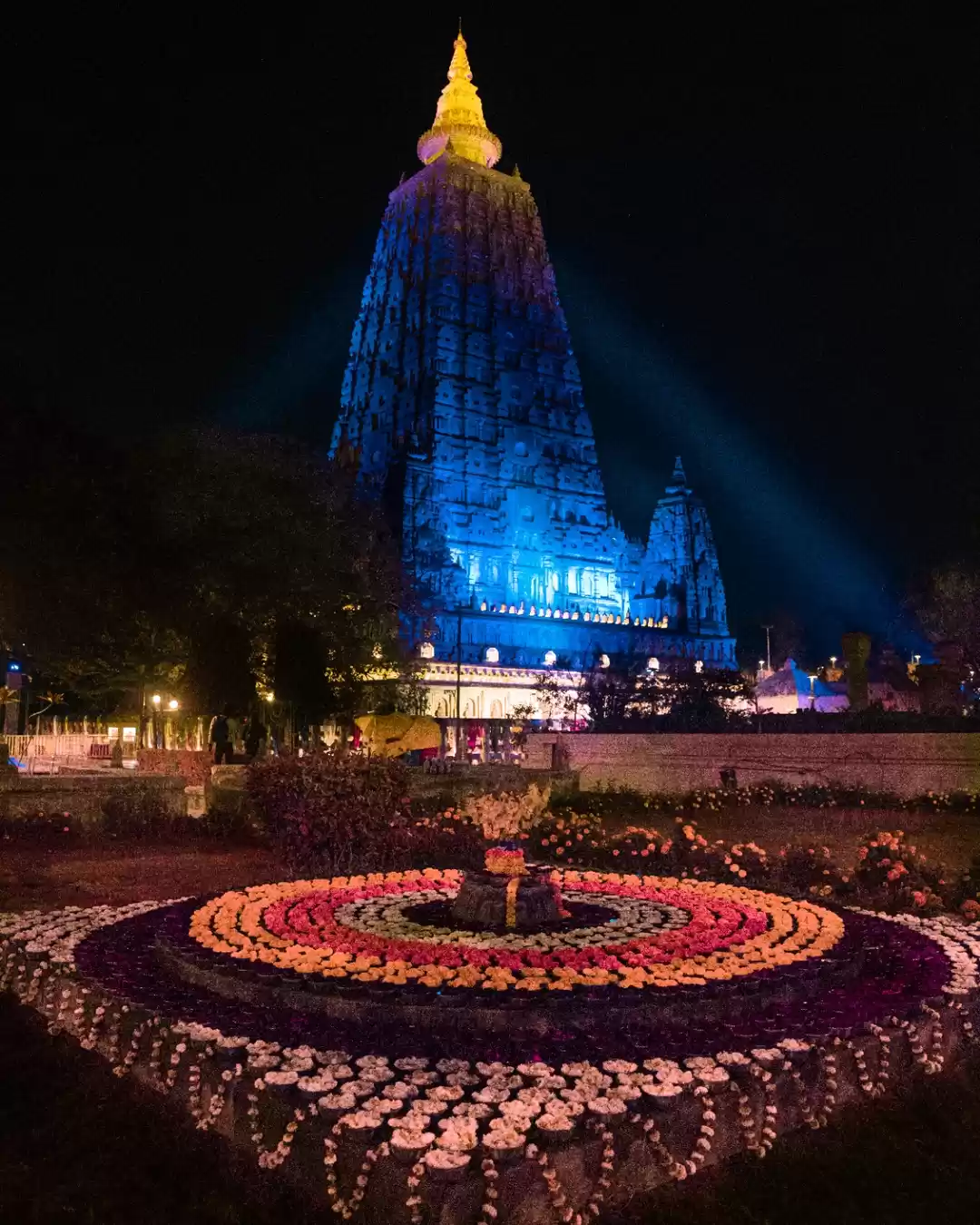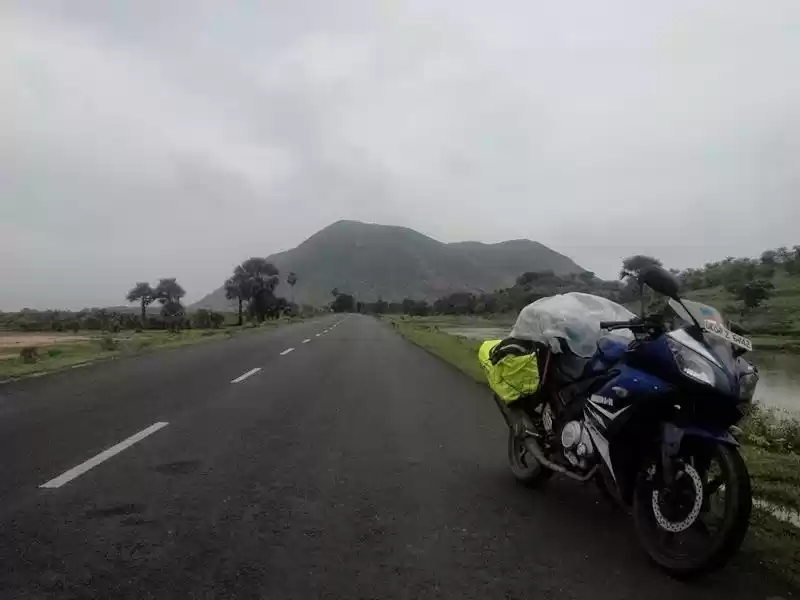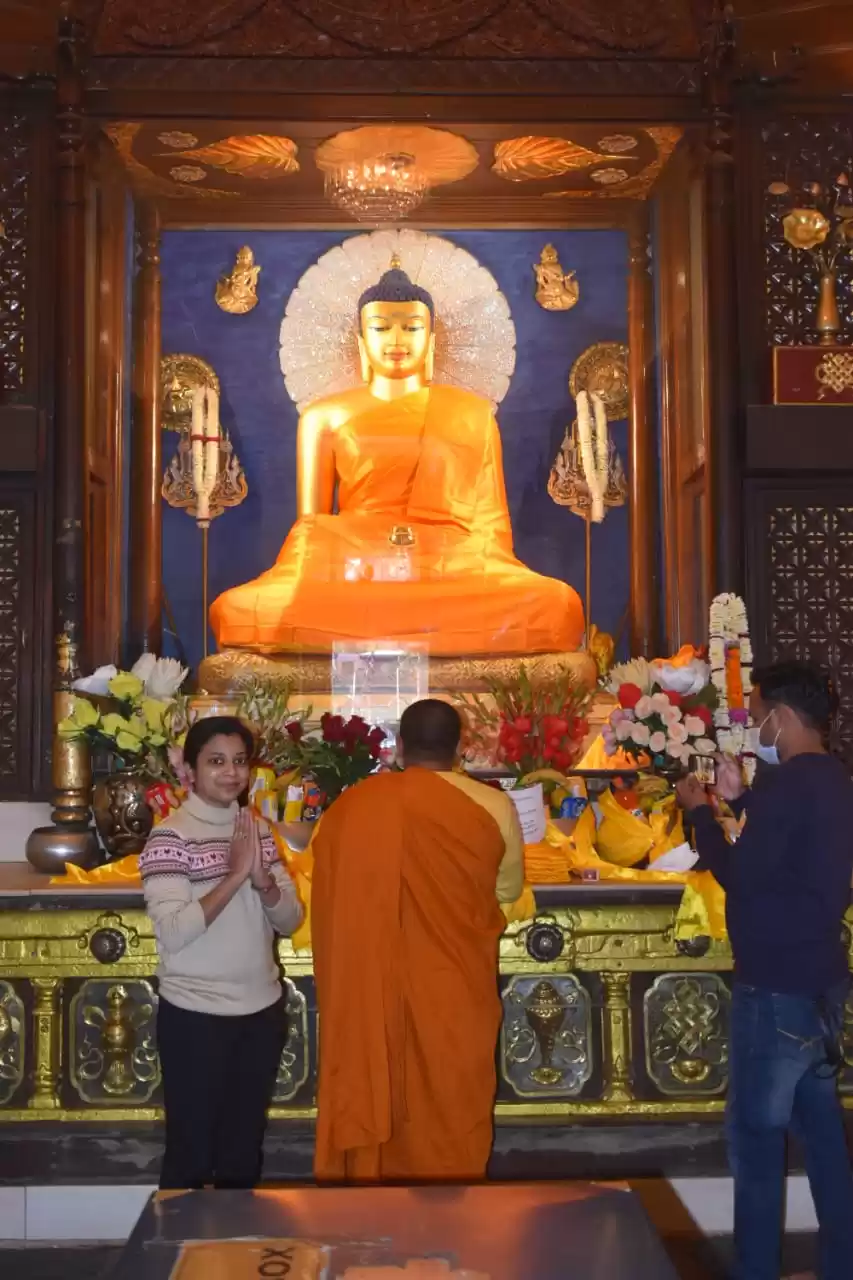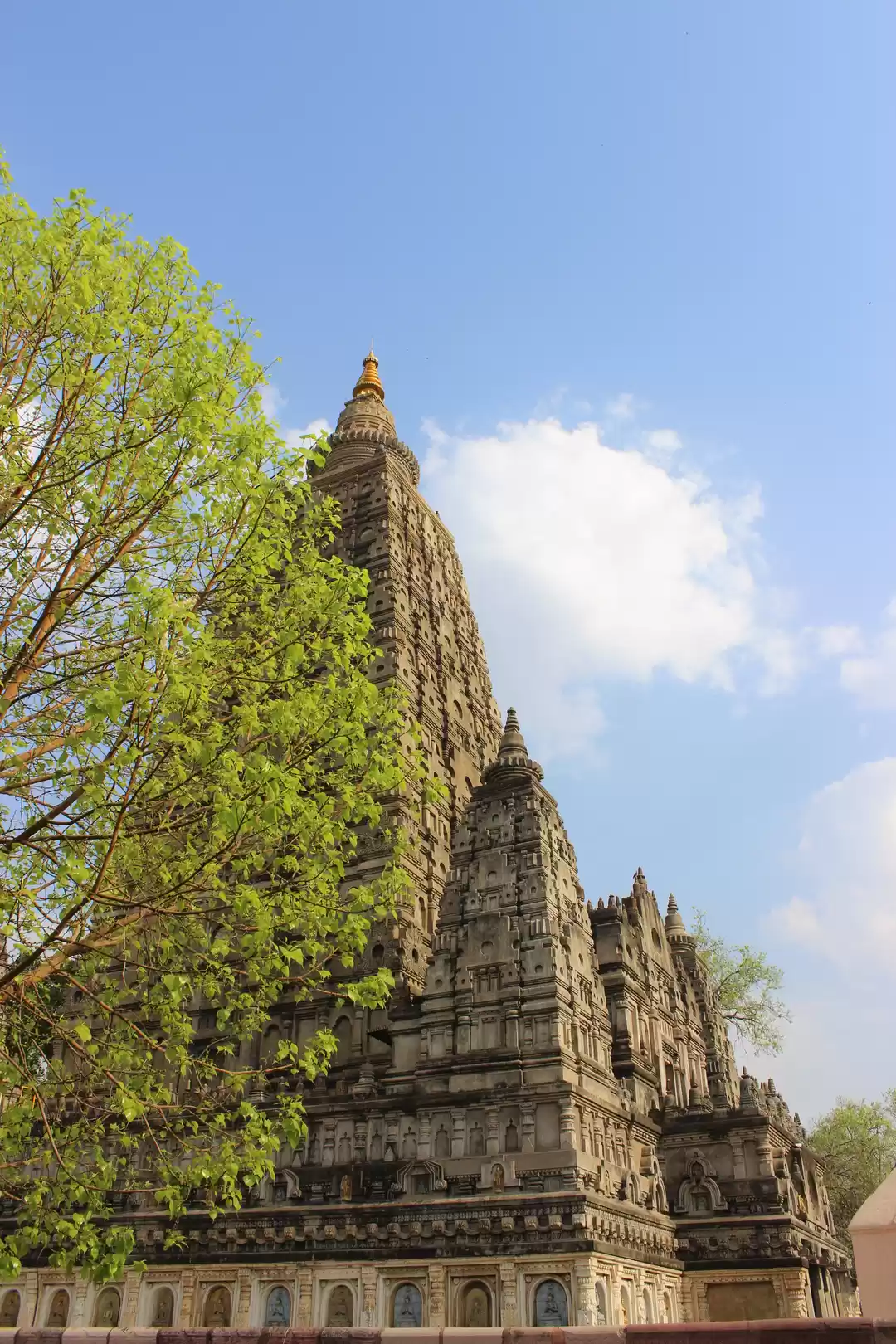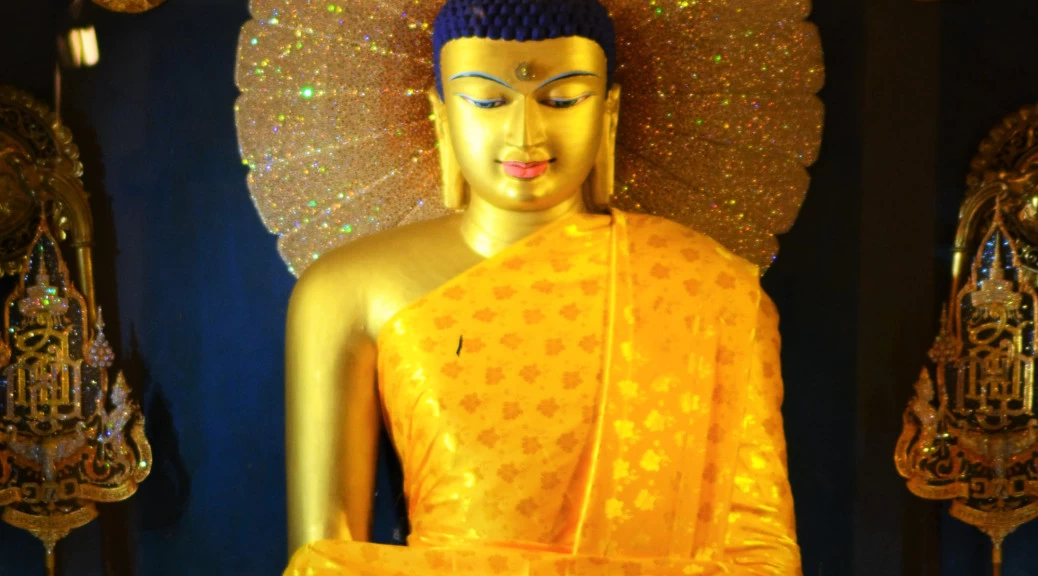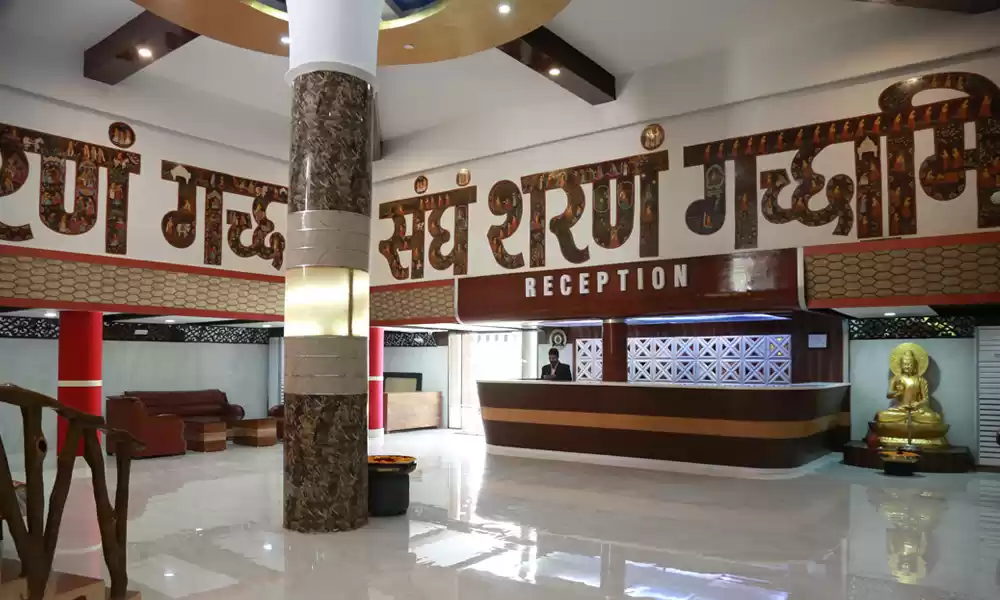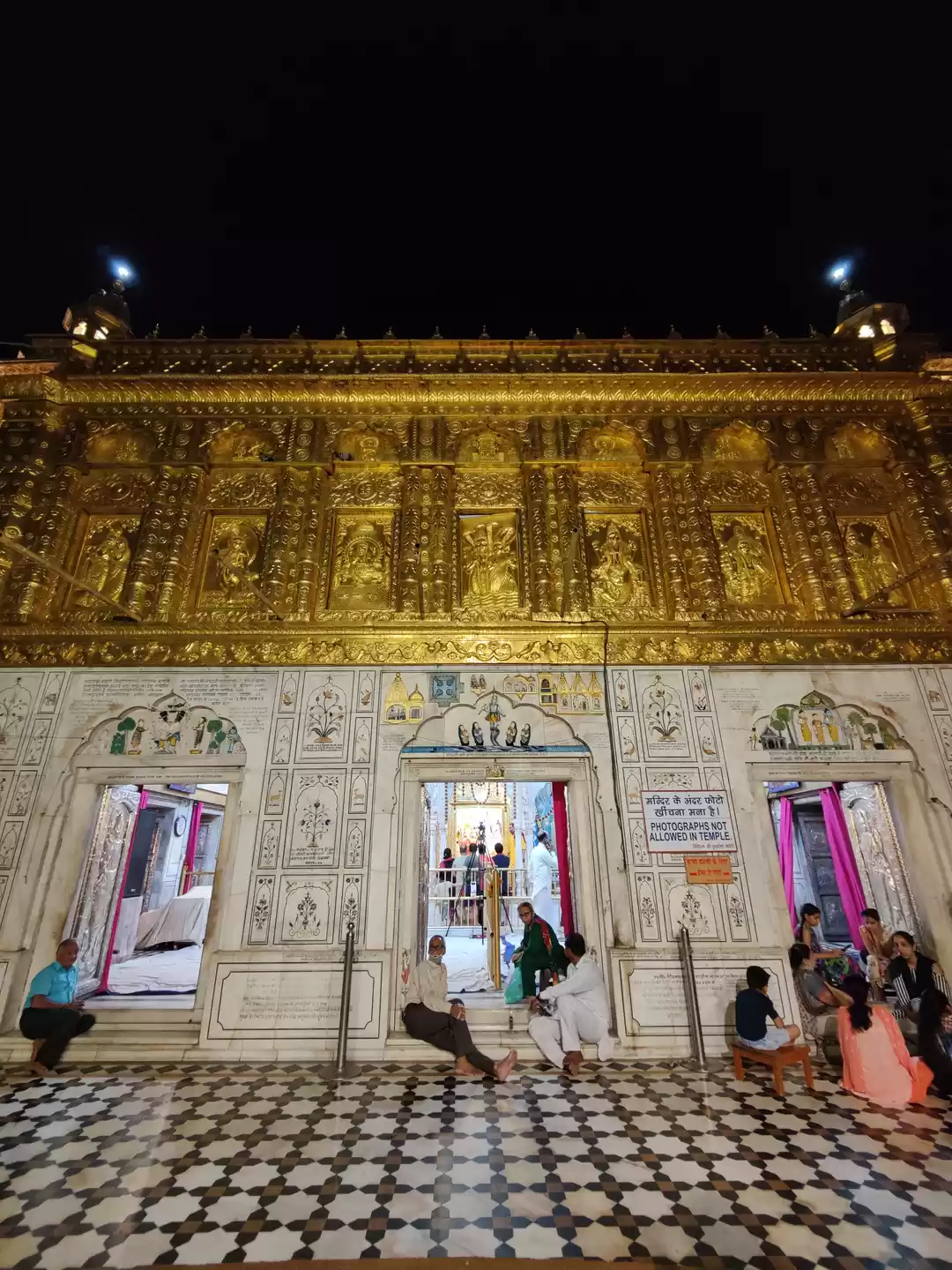If you are looking for a spiritual and cultural destination that will inspire and enlighten you, then you should consider visiting Mahabodhi Temple in Bodhgaya, Bihar, India. Mahabodhi Temple is one of the most revered and visited places of Buddhism, as it is the place where Buddha attained enlightenment under the Bodhi Tree.
It is also a UNESCO World Heritage Site that showcases the architectural and artistic excellence of ancient India. In this article, we will guide you through the history, significance, attractions, and experience of Mahabodhi Temple, and help you plan your trip to this sacred site.
History and Significance of Mahabodhi Temple
Mahabodhi Temple has a rich and fascinating history that dates back to the 6th century BCE, when Siddhartha Gautama, a prince from the Shakya clan, renounced his worldly life and embarked on a quest for truth and liberation.
After years of wandering and practicing various forms of asceticism, he arrived at Bodhgaya, where he sat under a pipal tree (now known as the Bodhi Tree) and meditated for 49 days. On the full moon night of Vaisakha (April-May), he attained enlightenment and became the Buddha, the awakened one.
The Buddha then spent seven weeks in the vicinity of the Bodhi Tree, contemplating his profound realization and sharing his teachings with his first disciples. He also predicted that his enlightenment would be commemorated by a great temple at this site.
According to Buddhist tradition, Emperor Ashoka, who ruled most of India in the 3rd century BCE and converted to Buddhism after witnessing the horrors of war, visited Bodhgaya and erected a shrine and a diamond throne at the spot where the Buddha attained enlightenment. He also established a monastery and a sangha (community) of monks and nuns at Bodhgaya.
Over the centuries, Mahabodhi Temple underwent several renovations and expansions by various rulers and dynasties, such as the Kushanas, the Guptas, the Palas, and the Burmese. The temple also faced invasions and destructions by foreign invaders, such as the Huns and the Muslims.
The temple was restored to its original glory in the 19th century by a British archaeologist named Alexander Cunningham, with the help of local monks and devotees. The temple was declared a UNESCO World Heritage Site in 2002, as it is considered “one of the earliest and most imposing structures built entirely in brick from Gupta period” .
Mahabodhi Temple is not only a historical monument, but also a living testimony of the Buddha’s enlightenment and teachings. It is a major pilgrimage site for Buddhists from all over the world, who come to pay homage to the Buddha and seek his blessings. It is also a place where people of different faiths and backgrounds can experience peace and harmony. As one visitor from Thailand said, “Mahabodhi Temple is a place where you can feel the presence of the Buddha and his compassion. It is a place where you can learn from his wisdom and practice his path. It is a place where you can connect with yourself and others”.
Architecture and Attractions of Mahabodhi Temple Complex
Mahabodhi Temple complex is a stunning example of ancient Indian architecture and artistry. The complex covers an area of about 12 acres and consists of several features and attractions that reflect the Buddhist culture and symbolism. Some of the main features and attractions are:

The main temple:
The main temple is a pyramidal structure that rises to a height of 55 meters. It has four entrances that face four cardinal directions. The temple houses a large statue of the Buddha in a sitting posture, touching the earth with his right hand. This gesture represents the moment when he called upon the earth to witness his enlightenment. The statue is made of black stone and is believed to be 1700 years old. The walls of the temple are adorned with carvings and paintings that depict scenes from the Buddha’s life and teachings.
The Bodhi Tree:
The Bodhi Tree is the most sacred and revered part of the temple complex, as it is believed to be a direct descendant of the original tree under which the Buddha attained enlightenment. The tree is surrounded by a stone railing that dates back to the 2nd century BCE. The railing has sculptures of various animals, flowers, gods, goddesses, and stupas. The tree is also decorated with colorful flags and offerings from devotees. The tree exudes a serene and sublime atmosphere that invites meditation and contemplation.

The pond:
The pond is located near the south-east corner of the temple complex. It is also known as Muchalinda Sarovar, as it is associated with a legend that says that when the Buddha was meditating under the Bodhi Tree, a severe storm arose and threatened to disturb him.
A snake king named Muchalinda emerged from the pond and coiled himself around the Buddha, forming a hood over his head to protect him from the rain and wind. The pond has a statue of the Buddha and the snake king in this pose, as well as a lotus flower in the center. The pond is a symbol of the Buddha’s calmness and concentration, as well as his connection with nature.

The Ratanaghara:
The Ratanaghara is a small brick building that stands on a platform near the north-east corner of the temple complex. It is also known as the Jewel House or the Jewel Walk, as it is said that the Buddha spent one week here walking up and down, radiating light from his body.
The building has a square chamber with a small window on each side. The chamber has a pedestal with footprints of the Buddha carved on it. The building is also decorated with colorful flags and lamps.
The stupas:
The stupas are hemispherical structures that contain relics or commemorate sacred events. There are several stupas in the temple complex, each with its own significance and history. Some of the notable stupas are:
The Lotus Stupa: This stupa is located near the south-west corner of the temple complex. It is also known as the Animeshlochan Chaitya, as it is said that the Buddha spent one week here looking at the Bodhi Tree without blinking his eyes. The stupa has a lotus flower on top of it, symbolizing the Buddha’s purity and wisdom.
The Ratnachankrama:
This stupa is located near the north-west corner of the temple complex. It is also known as the Jewel Walk, as it is said that the Buddha spent one week here walking around the Bodhi Tree, leaving behind marks of his feet on the ground. The stupa has a circular path around it, where pilgrims can walk and follow the footsteps of the Buddha.

The Ratnaghar Chaitya:
This stupa is located near the south-east corner of the temple complex. It is also known as the Ajapala Nigrodh Tree, as it is said that the Buddha spent one week here teaching five ascetics who became his first disciples. The stupa has a tree on top of it, representing the tree under which the Buddha gave his first sermon.
The trees:
The trees are another important feature of the temple complex, as they provide shade and beauty to the environment. There are several trees in the temple complex, each with its own name and significance. Some of the prominent trees are:
The Peepal Tree: This tree is located near the north-east corner of the temple complex. It is also known as the Mucalinda Tree, as it is said that this is where the snake king Muchalinda protected the Buddha from the storm.
The Banyan Tree: This tree is located near the south-west corner of the temple complex. It is also known as the Rajyatna Tree, as it is said that this is where two merchants named Tapussa and Bhallika offered honey cakes to the Buddha and became his first lay followers.
The Ashoka Tree: This tree is located near the south-east corner of the temple complex. It is also known as the Ashoka Pillar, as it marks the spot where Emperor Ashoka erected a pillar with an inscription that declares Bodhgaya as a holy place.
Meditation and Experience at Mahabodhi Temple Complex
Mahabodhi Temple complex is not only a place to see and admire, but also a place to meditate and experience. The temple complex offers a unique opportunity to immerse yourself in the spiritual atmosphere and follow the footsteps of the Buddha. Here are some tips and insights on how to meditate and enjoy your experience at Mahabodhi Temple complex:

Use the meditation garden:
The meditation garden is a peaceful and serene area that is located behind the main temple. It has several benches and cushions where you can sit and meditate in silence.
You can also use headphones to listen to guided meditations or chants that are available at a nearby counter. The meditation garden is open from 5 am to 9 pm, and there is no entry fee or dress code.
Use the fountains:
The fountains are small water jets that are located along the cloister walk that surrounds the main temple. They are meant to create a soothing sound and a cooling effect for meditators. You can sit near a fountain and listen to its gentle flow, or you can splash some water on your face or hands to refresh yourself.
Meditating at Mahabodhi Temple complex is a rewarding and enriching experience that can help you calm your mind, awaken your heart, and deepen your understanding of yourself and others. As one visitor from China said, “Meditating at Mahabodhi Temple complex is like coming home to yourself.
You feel the connection with the Buddha and his teachings, and you also feel the connection with all the beings who have come here before you and who will come here after you. You realize that you are not alone, but part of a larger community of seekers and learners”.
How to Visit and Explore Mahabodhi Temple
If you are planning to visit and explore Mahabodhi Temple, here are some practical information and tips that can help you make the most of your trip:

Security measures:
Mahabodhi Temple is a high-security zone, as it has been targeted by terrorist attacks in the past. Therefore, you need to go through several security checks before entering the temple complex. You need to deposit your bags, mobile phones, cameras, and other electronic devices at a counter near the main gate. You also need to pass through metal detectors and frisking by security personnel. You can carry only a small purse or wallet with you inside the temple complex.
Mobile phone restrictions:
Mobile phones are not allowed inside the temple complex, as they can disturb the meditators and the sacred atmosphere. You need to switch off your phone and deposit it at the counter near the main gate. You can collect it back after exiting the temple complex. If you need to make an urgent call or check your messages, you can use the public phone booths or internet cafes outside the temple complex.
Camera fee:
Cameras are allowed inside the temple complex, but you need to pay a camera fee of Rs. 100 for still cameras and Rs. 300 for video cameras. You can pay the fee at the counter near the main gate and get a receipt that you need to show at the entrance of the temple complex.
You can take photos and videos of the temple and its surroundings, but you need to respect the privacy and dignity of the meditators and the monks. You also need to avoid using flash or loud noises that can disturb them.
Entry fee:
There is no entry fee for visiting Mahabodhi Temple complex, as it is a public place that welcomes everyone regardless of their religion or nationality. However, you can make a voluntary donation at the donation boxes that are placed inside the temple complex. The donations are used for the maintenance and development of the temple complex, as well as for supporting various social and charitable activities of the temple authorities.
Timings:
Mahabodhi Temple complex is open from 5 am to 9 pm every day, throughout the year. However, the best time to visit is during sunrise or sunset, when you can witness the spectacular view of the temple against the backdrop of the sky. You can also visit during special occasions such as Buddha Purnima (the full moon day of Vaisakha), when thousands of pilgrims and devotees gather at the temple complex to celebrate the birth, enlightenment, and death of the Buddha.
Dress code:
There is no strict dress code for visiting Mahabodhi Temple complex, but you need to dress modestly and respectfully, as it is a religious and cultural site. You need to cover your shoulders, chest, and knees, and avoid wearing shorts, skirts, sleeveless tops, or revealing clothes. You also need to remove your shoes before entering the main temple or any other sacred area. You can leave your shoes at a shoe stand near the main gate or carry them in a plastic bag with you.
Also check out: The Great Awakening Temple in Bihar, India
Best time to visit
The best time to visit Mahabodhi Temple is between October and March, when the weather is pleasant and comfortable. The temperature ranges from 10°C to 25°C during this period, and there is little rainfall or humidity. You can enjoy sightseeing and exploring without feeling too hot or cold. However, you need to be prepared for some crowds and queues during this peak season, especially during weekends and holidays.
How To Reach
You can reach Mahabodhi Temple by air, rail, or road from different cities in India. The nearest airport is Gaya International Airport (GAY), which is about 12 km away from Bodhgaya. You can take a taxi or a bus from there to reach Mahabodhi Temple in about 30 minutes.
The nearest railway station is Gaya Junction (GAYA), which is about 16 km away from Bodhgaya. You can take a taxi or a bus from there to reach Mahabodhi Temple in about 45 minutes. The nearest bus station is Bodhgaya Bus Stand, which is about 1 km away from Mahabodhi Temple. You can take a rickshaw or a walk from there to reach Mahabodhi Temple in about 15 minutes.
Other Attractions and Activities near Mahabodhi Temple
Mahabodhi Temple is not the only attraction that you can visit in Bodhgaya or nearby areas. There are several other attractions and activities that you can enjoy that are related to Buddhism or Indian culture. Here are some of the places that you can visit or things that you can do near Mahabodhi Temple:

The Great Buddha Statue:
The Great Buddha Statue is a colossal statue of the Buddha that stands at a height of 25 meters. It is located about 1 km away from Mahabodhi Temple, and it is one of the largest and most impressive statues of the Buddha in India. The statue depicts the Buddha in a sitting posture, with his right hand touching the earth and his left hand resting on his lap. The statue is made of sandstone and red granite, and it took seven years to complete. The statue is surrounded by a beautiful garden and a pond, where you can relax and admire the view.
The Thai Monastery:
The Thai Monastery is a Buddhist temple that was built by the Thai government in 1956. It is located about 2 km away from Mahabodhi Temple, and it is one of the most elegant and colorful temples in Bodhgaya. The temple has a sloping roof and a golden spire, and it houses a large statue of the Buddha in a reclining posture, representing his final nirvana. The temple also has a meditation hall, a library, and a museum, where you can learn more about Thai culture and Buddhism.
The Archaeological Museum:
The Archaeological Museum is a museum that showcases the archaeological findings and artifacts from Bodhgaya and its surroundings. It is located about 3 km away from Mahabodhi Temple, and it is one of the oldest museums in Bihar. The museum has four galleries that display various items such as sculptures, coins, seals, inscriptions, pottery, terracotta, metal objects, and paintings.
The museum also has a model of Mahabodhi Temple as it looked in the 7th century CE. The museum is open from 10 am to 5 pm, except on Fridays and public holidays.

The Nalanda University:
The Nalanda University was an ancient university that was established in the 5th century CE and flourished until the 12th century CE. It was one of the largest and most prestigious centers of learning in the world, attracting scholars and students from India, China, Tibet, Korea, Japan, Persia, and other regions.
It was also a major hub of Buddhist studies, philosophy, logic, medicine, astronomy, mathematics, and other subjects. The university was destroyed by an invading army in the 12th century CE, leaving behind ruins and remnants of its glory. The university is located about 80 km away from Bodhgaya, and it is a UNESCO World Heritage Site. You can visit the university and explore its remains, such as temples, stupas, monasteries, libraries, lecture halls, dormitories, wells, and gardens.
There are many other attractions and activities that you can enjoy near Mahabodhi Temple such as the Tibetan Monastery, the Japanese Temple, the Chinese Temple, the Vietnamese Temple, the Bhutanese Temple, and the International Meditation Centre.
You can also enjoy some activities such as attending a Buddhist ceremony, taking a boat ride on the Ganges River, visiting a local market, or sampling some local cuisine.
You may also like to check out: Linger A Little Longer In the City of Bodh Gaya!
Mahabodhi Temple is a sacred site that offers a unique and unforgettable experience for anyone who visits it. It is a place where you can witness the history and significance of Buddhism, admire the architecture and artistry of ancient India, meditate and experience the peace and harmony of the Buddha’s enlightenment, and explore the culture and diversity of Bodhgaya and its surroundings.
Mahabodhi Temple is a place that will inspire and enlighten you, and make you consider it as your next destination.




